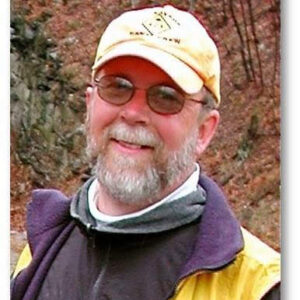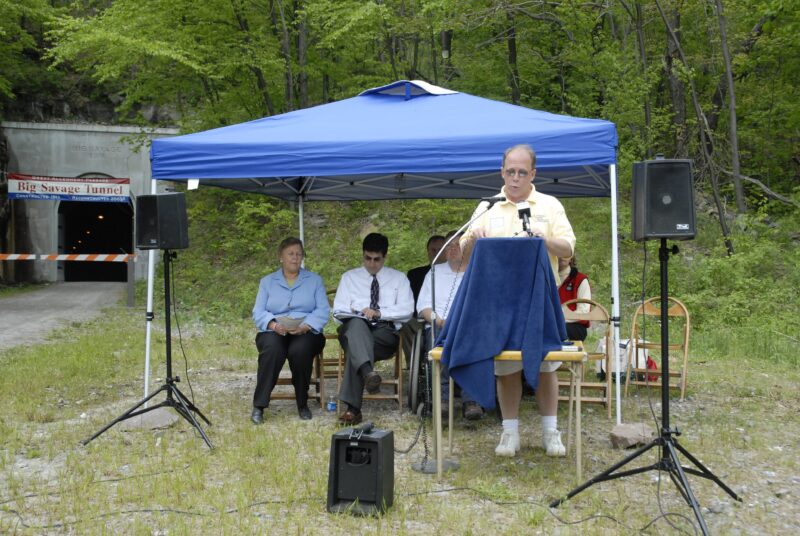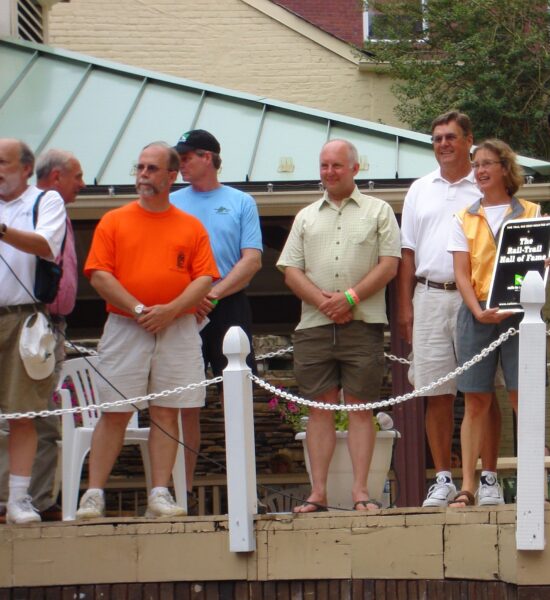“I think people could really see that this could be something that made sense, but it wasn’t something that every community had in their backyard. People had railroads, people had highways. People understand railroads and highways. They don’t necessarily understand the rail trail and what, potentially, it could be. […] Even as pie-in-the-sky as I was, and as positive as I was, I didn’t go far enough in my imagining what this could be. It’s been pretty incredible.”
-Hank Parke, September 26, 2017[1]

What does it take to build a trail? The Great Allegheny Passage’s (GAP) first trail builders asked themselves similar questions, including Hank Parke, who in many ways inspired the idea of a pedestrian/bike trail through Somerset County. He had heard various reports from people, the first being then-director of Laurel Ridge State Park Bob Huffman, about the potential of building a trail that would connect all of Somerset County to trails in Ohiopyle State Park. “Well, how difficult can this be?” Parke remembers thinking at the time.[2]

Parke in Confluence, Pennsylvania during the 100-Mile ceremony.
In hindsight, maybe Parke was predestined to lead a local trail group that would launch the development of an integral section of the Great Allegheny Passage rail-trail in Somerset County. Parke was exposed to tourism and outdoor recreation at an early age, as his parents started Hidden Valley Ski Resort in the Laurel Highlands in 1949. He himself would become a self-employed businessman in the recreation industry, running the Hidden Valley Cross-County Ski Center and leasing cabins in Kooser State Park. The railroad industry was also part of his lineage, as his father worked for the Union Railroad in Pittsburgh.[3]
Parke saw what his parents did at Hidden Valley – they “carved out ski slopes in what was all heavily forested land” and saw the same possibility in another recreational endeavor: expanding an existing trail in Ohiopyle far beyond its borders, although he underestimated what a huge undertaking it would be.[4]
After joining the Somerset Chamber of Commerce in 1988, Parke started to build interest in trail work. He eventually formed the Somerset County Rails-to-Trails Association (SCRTA) with Greg Chapelli (Executive Director of the Somerset Chamber of Commerce) and George Kaufman (a local attorney).[5] A 1989 trail feasibility study produced by the National Park Service estimated the total cost for a trail project in Somerset at $2.5 million, a mere tenth of its ultimate cost upon completion.[6] The relatively workable price tag pushed Parke to focus on the “low-hanging fruit” – projects that could be accomplished cheaply and easily. Parke collaborated with Dave Mankamyer from the Somerset Conservation District (who then became a county commissioner) to lead trail projects in the county. But before any construction could proceed along the right-of-way, the land itself had to be acquired from the CSX Corporation.[7]
Parke, Mankamyer, and attorney Kim Gibson met with CSX officials in Jacksonville, Florida to discuss a right-of-way sale that would secure the Western Maryland Railroad property within Somerset County. From this time forward, Parke and Mankamyer worked together as representatives for Somerset County to acquire and develop segments of trail through Confluence, Rockwood, Meyersdale, and Garrett, with Parke acting as a “front guy” when it came to engaging with the public on behalf of SCRTA.[8]
“I remember sitting around with the heavy hitters from the CSX–at least, they didn’t look like heavy hitters to me. I mean, we’re just boys from a small town and they knew we were damned serious. We flew down on a loaner jet and met with them and we were flying down the same day. That was pretty damn impressive. I was impressed. I was hoping they were impressed, too. […] You know, I let those guys [Kim Gibson and Dave Mankamyer] do most of the talking–a county commissioner [Mankamyer] who was real involved in the conservation district nationwide and a legal eagle [Gibson]. And, I mostly listened. But, if they wanted to hear about the green, buddy, I was right in there.”
-Hank Parke, September 26, 2017[9]

Parke speaking at the Big Savage Tunnel dedication ceremony in 2006.
The first section of trail that Parke and SCRTA successfully completed was the Rockwood to Pinkerton Low Bridge segment in 1993, spanning 7 miles of the 41 miles that would become the Somerset section of the GAP.[10] To gain broader support, Parke coordinated his local efforts with those of other Allegheny Trail Alliance (ATA) trail groups. Their collaboration created even more momentum for the project and propelled Parke to one of the original board seats on the ATA when it was incorporated in February 1996.[11] While he tried to gain support from donors outside the county, Parke and SCRTA focused heavily on the trail towns that would benefit most from the GAP. Parke helped organize trail cleanups when developing the trail in Rockwood, solidifying the community’s investment in the trail. Parke recalled an example of community support coming from a well-respected elder in the town of Meyersdale named Mary Neimiller. The Meyersdale Historical Society was formed through the efforts of Parke and Neimiller, which greatly cemented support for the project from Meyersdale’s citizens.
People have seen this opportunity [for economic development]. … Rockwood Trail House is a good example. Somebody was looking at that to buy it and before they really made a commitment, the front porch [roof] collapsed and is laying on the floor of the front porch. It was, like, “Oh, man, this is right by the trail, and this just doesn’t look good.” Well, sure enough, a fellow who had a farm just up the road, who’s also a township supervisor, he and his family bought it, fixed it up, and it became Rockwood Trail House. I mean, it’s right by the trail. There’s a driveway beside it and the trail parking lot is on the other side. It’s an ideal location, absolutely ideal.
-Hank Parke, September 26, 2017[12]
When Hank Parke first became involved in trail building, it seemed impossible that significant funding, strong community support, and economic uplift could come from a pedestrian-bike path. While he worked for the Chamber of Commerce, Parke noted, he dedicated nearly a quarter of his work week to just the GAP itself.[13] Thanks to various organizations like the ATA, the Western Pennsylvania Conservancy, CSX Railroad, the Somerset County Parks and Recreation Board, and Parke’s own organization, SCRTA, Parke was able to help bring the GAP to Somerset and showcase not only the quality of life a trail brings, but also its economic viability.

Parke (left-center, orange t-shirt) posing with other trailbuilders during the presentation of the first Rails-to-Trails Hall of Fame award in Cumberland, Maryland.
Hank Parke 2005 Video Interview with Paul G. Wiegman
Hank Parke 2005 Video Interview Transcript with Paul G. Wiegman
Hank Parke 2017 Interview Transcript with Eric Lidji
Author: Reed Hertzler and Jennifer Sopko
Endnotes
[1]Hank Parke (Somerset County Rails-to-Trails Association founder, Personal interview on building the trail in Somerset County), interviewed by Eric Lidji, Somerset Trust Company, September 26th, 2017. 23.
[2]Hank Parke (Somerset County Rails-to-Trails Association founder, Personal interview on building the trail in Somerset County), interviewed by Eric Lidji, Somerset Trust Company, September 26th, 2017. Transcript: “2017-09-26 Hank Parke 1 & 2,” 2.
[3] Hank Parke (Somerset County Rails-to-Trails Association founder, Personal interview on building the trail in Somerset County), interviewed by Eric Lidji, Somerset Trust Company, September 26th, 2017. Transcript: “2017-09-26 Hank Parke 1 & 2,” 1-2.
[4] Hank Parke (Somerset County Rails-to-Trails Association founder, Personal interview on building the trail in Somerset County), interviewed by Eric Lidji, Somerset Trust Company, September 26th, 2017. Transcript: “2017-09-26 Hank Parke 1 & 2,” 3.
[5] Hank Parke Transcript: “2017-09-26 Hank Parke 1 & 2,” 3-4.
[6]“SCRTA History.pdf,” Somerset County Rails to Trails Association, 1.
[7] Hank Parke Transcript: “2017-09-26 Hank Parke 1 & 2,” 8-9.
[8] Hank Parke Transcript: “2017-09-26 Hank Parke 1 & 2,” 17.
[9] Hank Parke Transcript: “2017-09-26 Hank Parke 1 & 2,” 9.
[10] “SCRTA History.pdf,” Somerset County Rails to Trails Association, 1.
[11]Paul g Wiegman, The Great Allegheny Passage: A History, (Allegheny Trail Alliance, 2013), 78.
[12]Hank Parke Transcript: “2017-09-26 Hank Parke 1 & 2,” 19-20.
[13] Hank Parke Transcript: “2017-09-26 Hank Parke 1 & 2,” 18.

